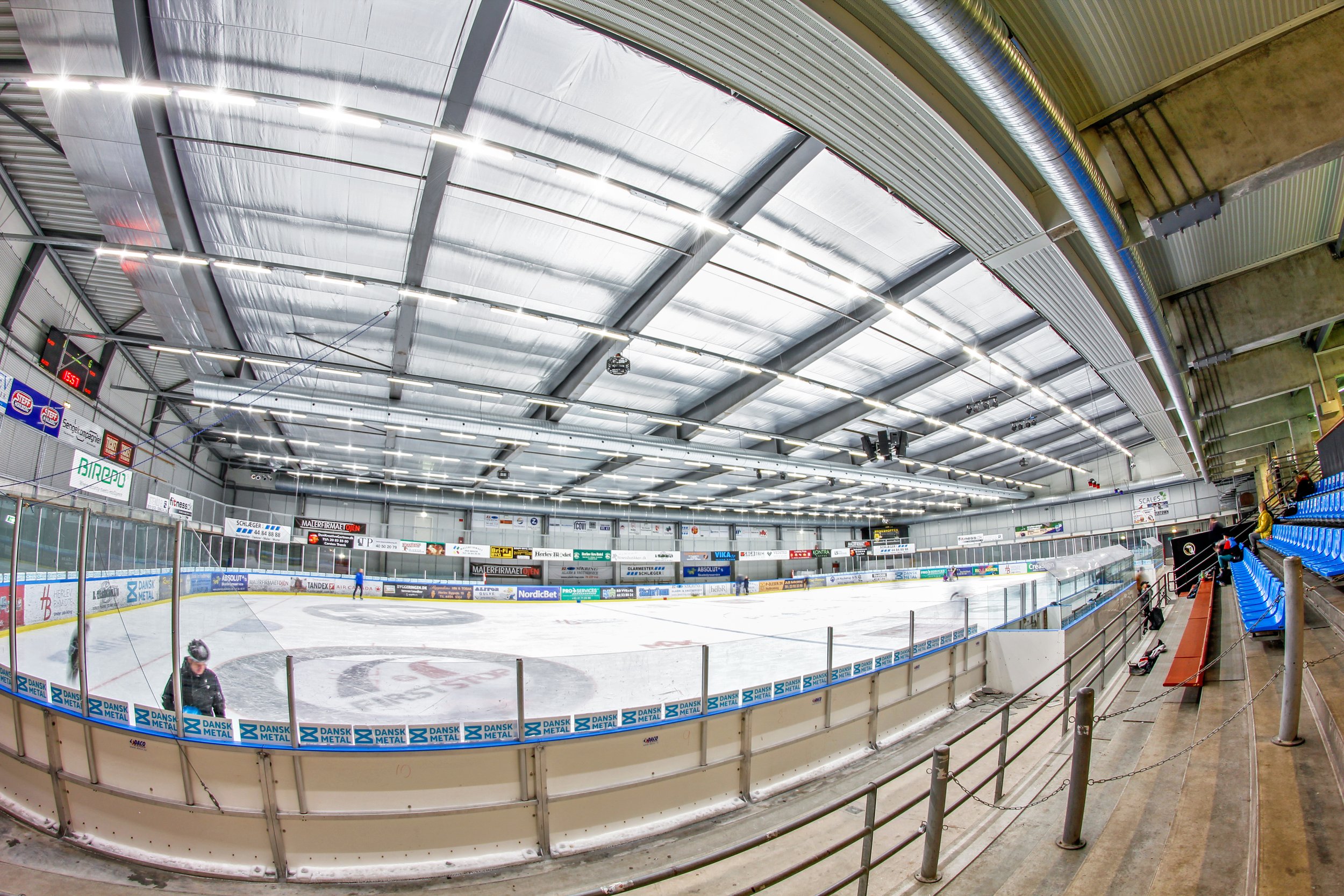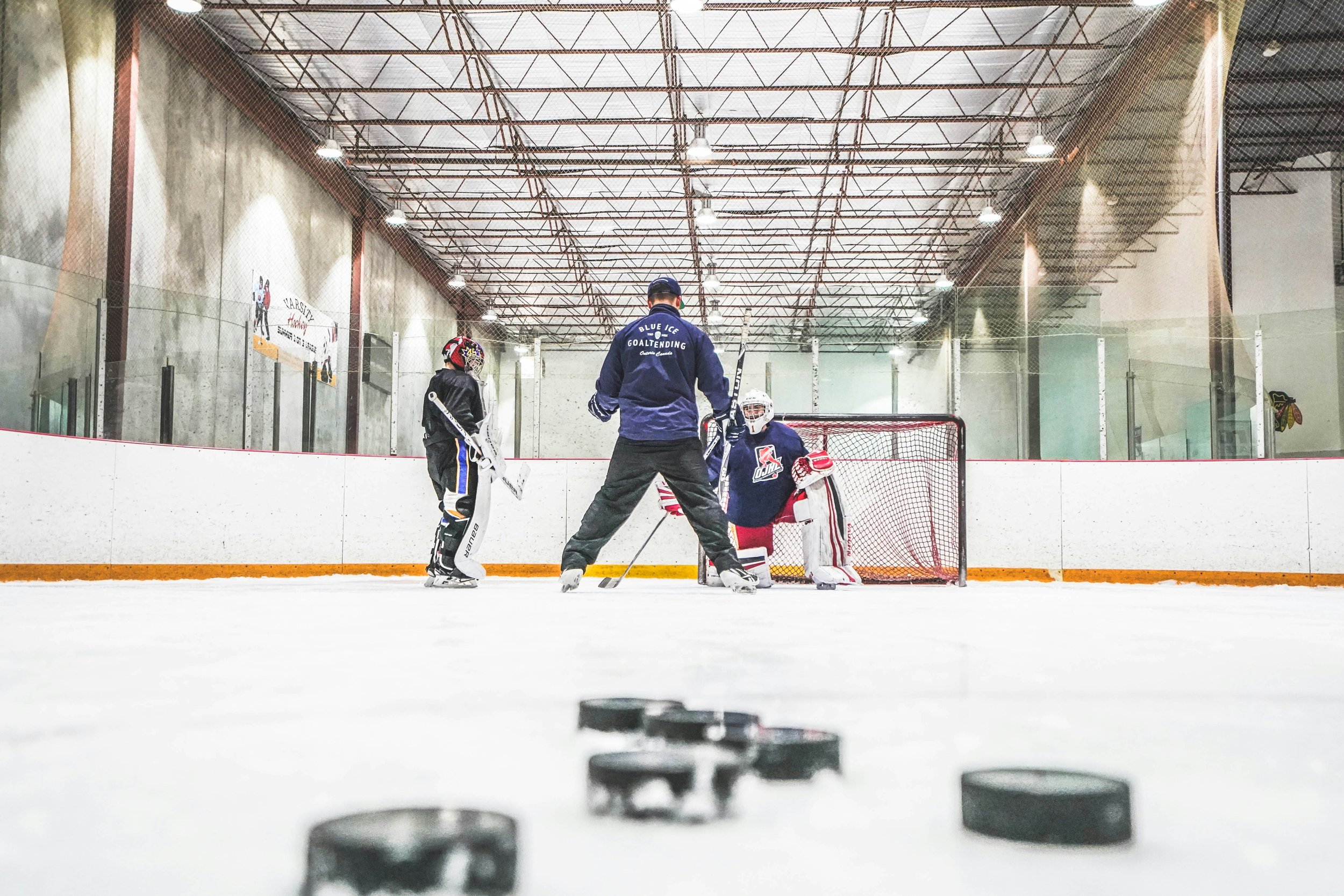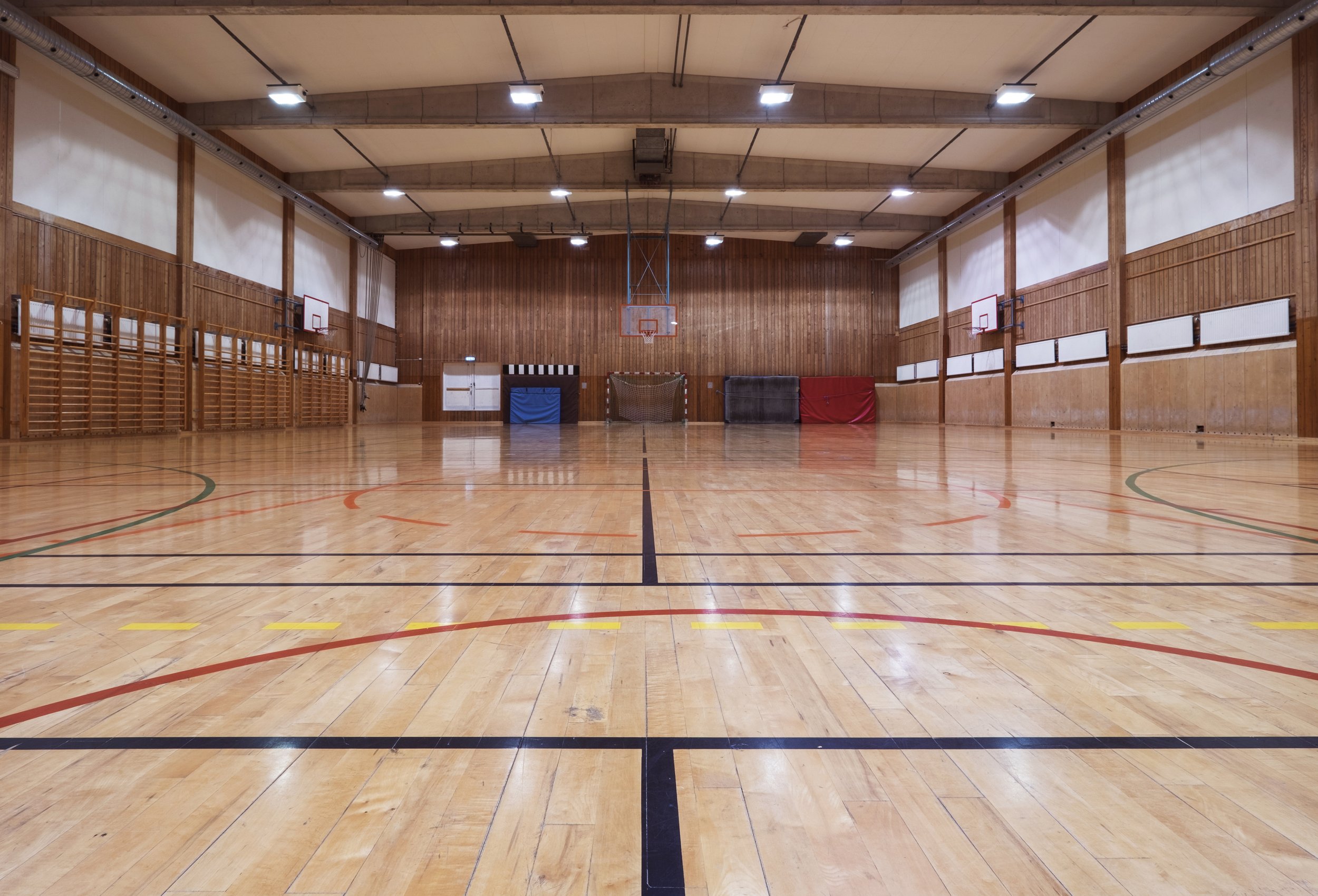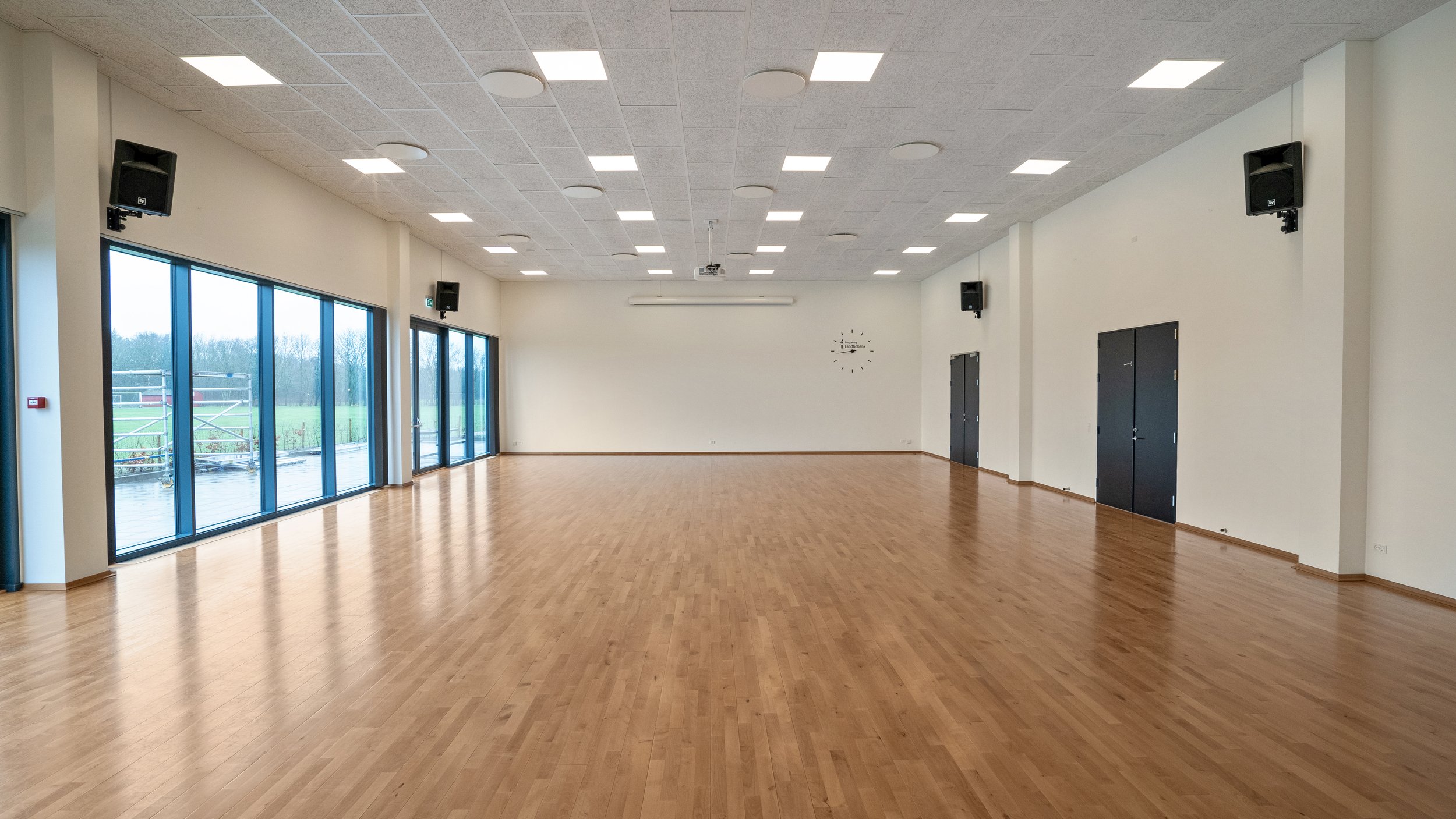Lighting for indoor sports
The lighting requirements for sports halls vary depending on the activity. Even lighting in combination with intelligent lighting systems is a good combination to meet the different needs of different sports. Everything from the size of the ball, the speed of the ball, the size of the playing surface, the division and height of the ball, etc. should be accommodated by the strength of the lighting, color temperature, light distribution, luminaire placement and number.
Lighting for mixed sports
A sports hall that is used for mixed sports such as handball, volleyball, basketball etc. and has an activity area of 40 x 20 meters should have 750 lx on the floor during competitions and matches to ensure that there is enough light on the court. Illuminance for school gymnastics or indoor training can be lower. To be able to judge the height of the ball, as well as the movement of teammates and opponents, it is important to consider vertical lighting. The position of the luminaires is also important, both in relation to the direction of the light and to avoid general glare. To avoid glare and achieve glare-free light, high-quality grids can be retrofitted to the luminaire to provide both good light and reduce glare.
Zones / room divisions of sports halls
Some sports halls can be divided into different rooms/zones depending on the activity or sport. It is therefore important to consider the location of the luminaires and to divide the luminaires into zones so that the lighting control can be adjusted both in relation to the individual zones and as a whole when the entire hall is in use. It is recommended to use DALI control in sports halls that need special lighting control. Pay attention to the points below:
Luminaires in a sports hall need to be able to withstand a lot, so make sure the luminaire is solidly shielded.
To save energy, motion sensors can be a good idea so that the lighting only comes on when there is activity in the hall. If a new sports hall is being built, incorporating daylight can be beneficial - also to save energy.
A RIP sensor is recommended to reduce energy costs in sports halls due to the high energy consumption.
If the hall must be divisible, remember to consider the position of the luminaires in relation to the partitions to ensure the right amount of lighting for both a divided and undivided sports hall.
Lighting a tennis hall
There are slightly different requirements when lighting a tennis hall. In addition to the normal 500 lx on the floor/court, there must also be the same amount of lighting 2 meters outside the sidelines and 3 meters on the back line for the sake of the game. Like in any other sports hall, glare from the light is inappropriate and should be avoided. In tennis, there is a lot of upward gaze, e.g. when serving. Consider the position of the luminaire in relation to the sport to achieve the best lighting. Due to the size of a tennis ball, vertical lighting requirements are particularly high to enable the movement of the tennis ball to be detected. In addition, vertical illumination also supports the movement of teammates and opponents and helps to detect a changing background.
NOTE: The standard for sports hall lighting can be found in EN 12193:2007
Lighting an ice hockey hall
Hockey is a fast-paced sport, which has an effect on lighting requirements. A fast-paced sport requires extra lighting for the players, referee and spectators to perceive what is happening on the field. The lighting requirements differ between training and matches and between professional and lower league matches. If you need lighting for training and low series, you need 600 lx on the ice, if it's a professional game where the match is broadcast on TV, the requirement is 1000 lx on the ice. If you've watched a bit of ice hockey, you've probably noticed the spotlights that follow the players during breaks and create a nice show effect. To achieve this lighting result, special spot luminaires and lighting control must be considered from the start.
NOTE: The standard for lighting uniformity and glare can be found in EN 12193:2007
Lighting a squash and paddle hall
The floor is not the only playing surface used in Squash and Padel. In Squash and Padel, both the floor and the walls are played on, so it's important to consider the illuminance and evenness of both the floor and walls when lighting a court. Both sports are fast-paced games with a small, high-speed ball that can come from many heights, so it's important to keep vertical illuminance in mind when planning and calculating lighting for a squash and paddle court. Vertical lighting supports visibility and a higher level of responsiveness, which is important for a fast-paced sport like squash and paddle. To avoid glare, luminaires should be placed around 1 meter from the side walls.
NOTE: The standard for lighting uniformity and glare can be found in EN 12193:2007
Ball testing is essential
In many ballrooms, balls can come into contact with the lighting fixtures. Therefore, they need to be extra resistant to ball throwing. The luminaires that Lumega uses for sports halls are tested according to VDE 0710-13. VDE 0710-13. The test is passed when the luminaire can withstand 36 shots from a 187 mm diameter handball in three different directions at 60 km/h without parts coming loose or affecting the IP rating.
Lumega's recommendations
The most powerful lighting solution: Powerful lighting can be a sensible choice if the lighting needs to support an activity or sport that is particularly dependent on good lighting. If you're looking for an LED luminaire that can provide powerful and intensive lighting, consider our NS94 model, a suspended luminaire that is very robust and energy efficient.
The practical lighting solution: Sports halls need general lighting that is capable of illuminating a large area. If you want a practical lighting solution that works as all-round lighting in the sports hall, our NS56 model is a great option. This model is specially designed to illuminate rooms with a ceiling height of up to 5 meters, and this luminaire also has an incredibly long lifespan of 60,000 hours.
Shortest payback time: Choosing a lighting system is also a financial consideration. If you want the LED solution with the shortest payback time, you can install the retrofit LED tube NS20. This model is unique in that the LED tube can be used in luminaires that are already installed in the ceiling for fluorescent lamps. So if there are already existing luminaires, our NS20 can be used directly in this luminaire.
The architectural lighting solution: Lighting doesn't just have to be a practical measure - it can also be a stylish and architectural choice. If you're looking for LED lighting that is stylistically beautiful and designed to form an architectural part of the interior, a linear LED system of aluminum tracks is a great choice. You may want to consider our linear system model B7. These are 2-meter luminaires that can either be installed as a continuous line of light from one end of the room to the other, or as lines of light placed at different points in the room.
How can we help you?
At Lumega, we focus on the quality of light and life, and we can offer you LED products with the latest lighting technology on the market. At Lumega, we design different LED solutions that can be adapted to any environment and tailored to any situation. We can help you design a unique and optimal LED solution for your specific needs and wishes. Contact us to learn more about the impressive benefits of LED and start improving your lighting with LED today.





